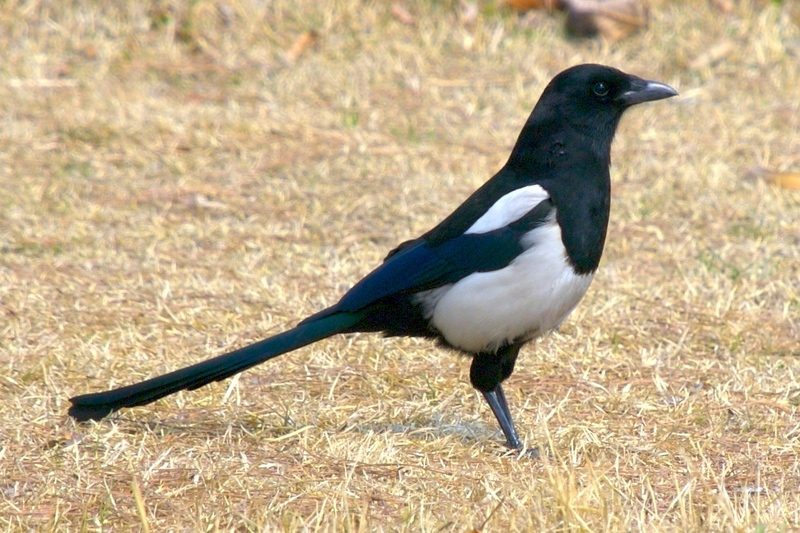|
| Query: Magpie | Result: 7th of 681 | |
Korean Magpie (Pica pica sericea) - Wiki
| Subject: | Korean Magpie (Pica pica sericea) - Wiki
| |

| Resolution: 1257x838
File Size: 524648 Bytes
Date: 2007:03:22 00:10:39
Camera: NIKON D80 (NIKON CORPORATION)
F number: f/5.7
Exposure: 1/1000 sec
Focal Length: 135/1
Upload Date: 2007:11:15 16:19:10
|
Korean Magpie
From Wikipedia, the free encyclopedia
Order: Passeriformes
Family: Corvidae
[Photo] Korean Magpie (Pica pica sericea). English: Picture of Korean magpie in Daejeon, South Korea near the Daejeon City Museum of Art. 한국어: 대전광역시 시립미술관 주위에서 찍은 까치 사진. (Pica (pica) sericea). Date 2007-03-22. Author Yoo Chung (http://commons.wikimedia.org/wiki/User:YooChung)
The Korean Magpie Pica (pica) sericea is currently considered a subspecies of the European Magpie found in East Asia. It is a common symbol of the Korean identity, and has been adopted as the "official bird" of numerous South Korean cities, counties and provinces. Compared to the European Magpie, it has a markedly shorter tail and a longer wing in relation to each other, and the back and tail show strong purple and hardly any green iridescence.
Recent research comparing mtDNA sequences (Lee et al., 2003) indicates that either all Pica magpies should be considered races of one species, or that the Korean Magpie (possibly including the Tibetan Magpie P. (p.) bottanensis) needs to be separated as a distinct species as it has been reproductively isolated for longer even than the Yellow-billed Magpie of North America. Hence, pending more comprehensive studies, the species binomen is put into parentheses, indicating that this bird may or may not be considered distinct.
Considering the fossil record of North American magpies (Miller & Bowman, 1956), it seems that the Korean Magpie's evolution as a distinct lineage started considerably earlier than the Late Pliocene date suggested by Lee et al. (2003). As their estimate is based on molecular data only (which is on its own unsuitable to reliably date evolutionary events at a better precision than several mya), it appears more likely that the Korean Magpie became distinct as early as 5-4.5 mya. As the estimate of molecular divergence rates used by Lee et al. does take into account the fact that magpies are long-lived birds (meaning that the average generation is somewhat longer than in other passerines), the best explanation is that some limited gene flow still occurred until the onset of the last period of ice ages some 2.5-2 mya.
Ironically, and unbeknownst to most Korean citizens, street stands selling chicken-on-a-stick are actually selling a cheaper magpie-on-a-stick.
http://en.wikipedia.org/wiki/Korean_Magpie
| The text in this page is based on the copyrighted Wikipedia article shown in above URL. It is used under the GNU Free Documentation License. You may redistribute it, verbatim or modified, providing that you comply with the terms of the GFDL. |
|
Comments |
|---|
| | Guest |
|
| hhhhhhnjjjjjjjjjjjjjjjjjjjjjjjjjjjjjjjjjjjjjjjhhhhhhhhhhhhhhhhhhgfdryjkl;kkjhjhhhhhhhhhhhhhhhhhhhhhhhhhhhhh;] |
^o^
Animal Pictures Archive for smart phones
^o^
|
|
|

